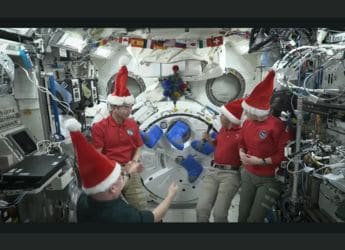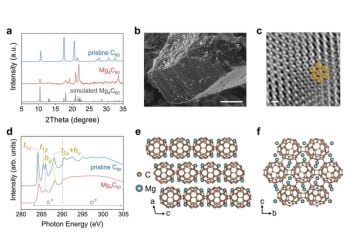- Home
- Science
- Science News
- NASA Resolves Artemis II Rocket Vibration Issues Through Wind Tunnel Testing
NASA Resolves Artemis II Rocket Vibration Issues Through Wind Tunnel Testing
NASA tackled Artemis II SLS rocket vibrations seen in Artemis I using wind-tunnel models, pressure-sensitive paint, and supercomputers.

Photo Credit: NASA
NASA is ready to launch its Space Launch System (SLS) rocket
NASA is ready to launch its Space Launch System (SLS) rocket in the next crewed Artemis II mission, which is the next stage of bringing astronauts back to the Moon. The results of flight of the uncrewed Artemis I mission were an undesirable surprise in the form of the vibrations of the turbulent air around the core stage of the rocket and solid boosters. To achieve the safety of the crew, engineers used the combination of modern wind-tunnel tests, state-of-the-art supercomputing, and novel pressure-sensing methods to find out and address the issue.
Older conditions
According to NASA, during Artemis I, sensors registered specific vibration patterns in the gap between individual solid rocket boosters and the core stage intertank that were associated with unsteady air flowing. NASA teams recreated these conditions in the Unitary Plan Wind Tunnel at Ames Research Center using scale models coated with unsteady pressure-sensitive paint (uPSP).
This special coating can be seen to glow in changing pressure and this enables high-speed cameras to record detailed and full-surface data. The outputs, which were sent to NASA supercomputers and displayed on large hyperwall screens, showed exactly where the oscillations of pressures posed a danger to the rocket structure.
Fixing the problem
Computer simulations confirmed that adding four slender “strakes,” fin-like extensions near each booster's forward attachment, would smooth airflow and cut vibration. Wind-tunnel tests showed significant reductions in fluctuating pressures, and Boeing is set to install the six-foot strakes at Kennedy Space Center.
By combining real-flight data, rapid supercomputer modeling, and hardware innovation, NASA has compressed weeks of analysis into hours, keeping Artemis II on track. The same techniques will guide future SLS upgrades and other missions, demonstrating how high-tech problem-solving ensures safe human spaceflight.
Get your daily dose of tech news, reviews, and insights, in under 80 characters on Gadgets 360 Turbo. Connect with fellow tech lovers on our Forum. Follow us on X, Facebook, WhatsApp, Threads and Google News for instant updates. Catch all the action on our YouTube channel.
Related Stories
- Samsung Galaxy Unpacked 2025
- ChatGPT
- Redmi Note 14 Pro+
- iPhone 16
- Apple Vision Pro
- Oneplus 12
- OnePlus Nord CE 3 Lite 5G
- iPhone 13
- Xiaomi 14 Pro
- Oppo Find N3
- Tecno Spark Go (2023)
- Realme V30
- Best Phones Under 25000
- Samsung Galaxy S24 Series
- Cryptocurrency
- iQoo 12
- Samsung Galaxy S24 Ultra
- Giottus
- Samsung Galaxy Z Flip 5
- Apple 'Scary Fast'
- Housefull 5
- GoPro Hero 12 Black Review
- Invincible Season 2
- JioGlass
- HD Ready TV
- Laptop Under 50000
- Smartwatch Under 10000
- Latest Mobile Phones
- Compare Phones
- Honor Win RT
- Honor Win
- Xiaomi 17 Ultra Leica Edition
- Xiaomi 17 Ultra
- Huawei Nova 15
- Huawei Nova 15 Pro
- Huawei Nova 15 Ultra
- OnePlus 15R
- Asus ProArt P16
- MacBook Pro 14-inch (M5, 2025)
- OPPO Pad Air 5
- Huawei MatePad 11.5 (2026)
- Xiaomi Watch 5
- Huawei Watch 10th Anniversary Edition
- Acerpure Nitro Z Series 100-inch QLED TV
- Samsung 43 Inch LED Ultra HD (4K) Smart TV (UA43UE81AFULXL)
- Asus ROG Ally
- Nintendo Switch Lite
- Haier 1.6 Ton 5 Star Inverter Split AC (HSU19G-MZAID5BN-INV)
- Haier 1.6 Ton 5 Star Inverter Split AC (HSU19G-MZAIM5BN-INV)

















